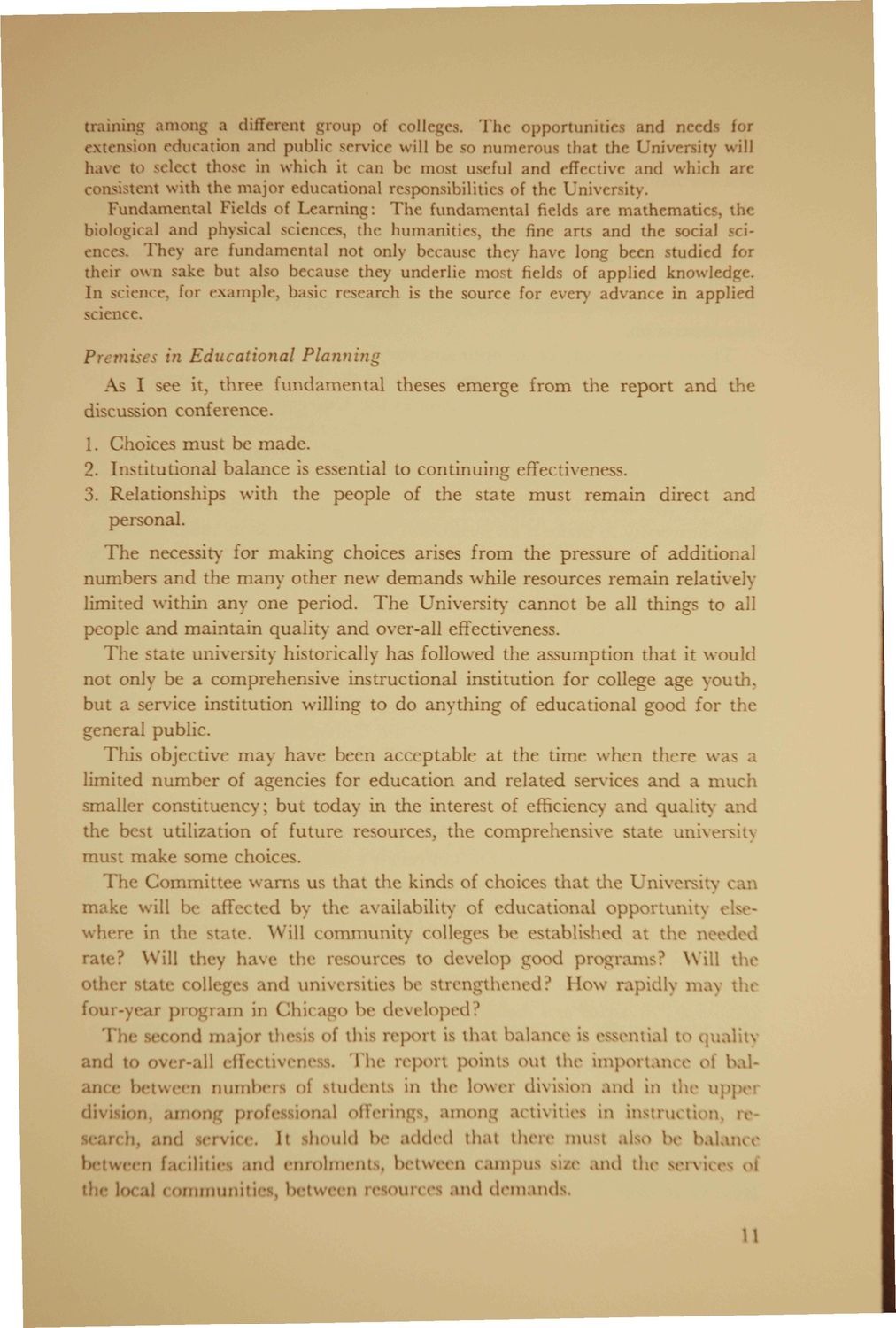Caption: Booklet - State of University (1958)
This is a reduced-resolution page image for fast online browsing.

EXTRACTED TEXT FROM PAGE:
training among a different group of colleges. The opportunist and n for extension education and public service will be S numerous that the (Jnh O ity will have to select those in which it can be most useful and effective and which are • •stent with the major educational responsibilities of the Univei ity. Fundamental Fields of Learning: The fundamental fields are inathcmati* the biological and physical sciences, the humanities, the fine arts and the social .sciences. They are fundamental not only because they have long been studied for their own sake but also because they underlie most fields of applied knowledge In science, for example, basic research is the source for even- advance in applied science. Pre -muses in Educational Planning As I see it, three fundamental theses emerge from the report and the discussion conference. 1. Choices must be made. 2. Institutional balance is essential to continuing effectiveness. 3. Relationships with the people of the state must remain direct and personal. T h e necessity for making choices arises from the pressure of additional numbers and the many other new demands while resources remain relatively limited within any one period. T h e University cannot be all things to all people and maintain quality and over-all effectiveness. T h e state university historically has followed the assumption that it would not only be a comprehensive instructional institution for college age youth, but a service institution willing to do anything of educational good for the general public. This objective may have been acceptable at the time when there was a limited number of agencies for education and related services and a much smaller constituency; but today in the interest of efficiency and quality and the r> Nt utilization of futun resources, the comprehensive state university must make some choices. The Committee warns us that the kinds of choices that die University ( in make will be affected by the availability of educational opportunity elsewhere in the state. Will community colleges be established at the needed tte? Will they have the n ources to develop good programs? Will the ther colli and universities be strengthened? I low rapidly may th ur-y ar program in Chi< o be developed? '1 he second major the is of this report is that h.d.mcc is essential to qualit) and to over-all efl :tiven< The report points out the importance ol balan bett rn numbers ol student in the lower division and in the upp division, amoi professional offerinj among activities in instruction, n search, and service. It should be added that there- must also be hulant between facilities and enrolments, between campus si/e and tht servit i! c o n m m n i t i ' heiween p UITes a n d d e m a n d s II
|